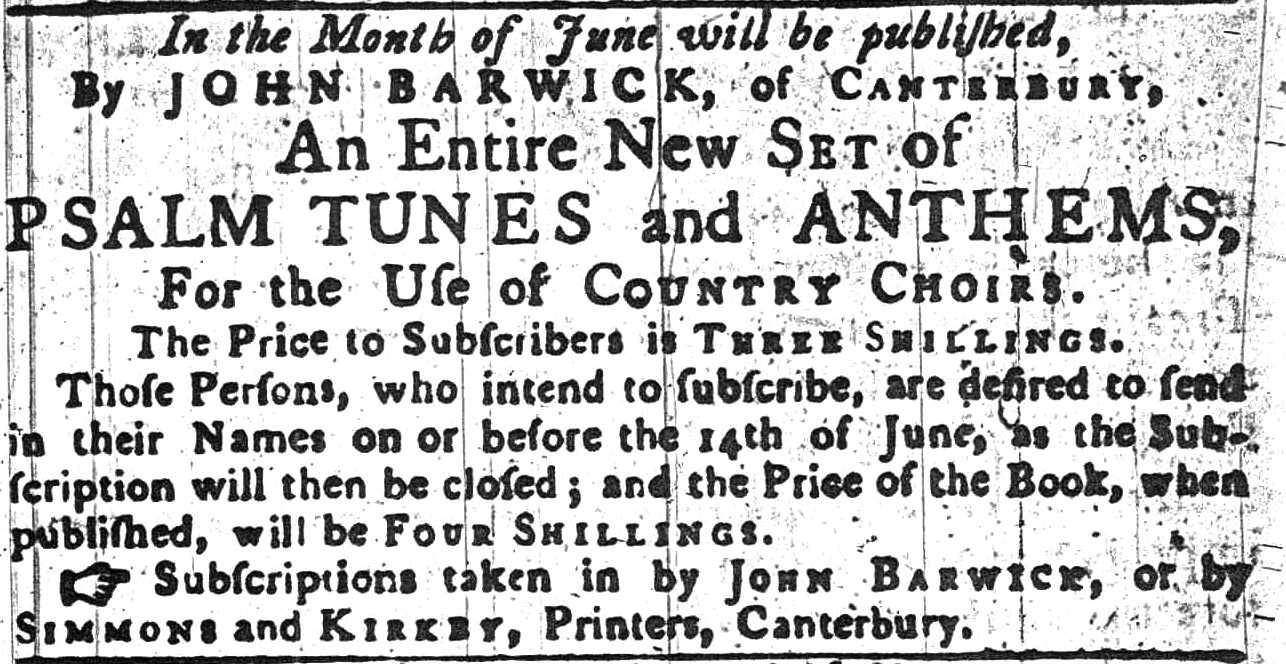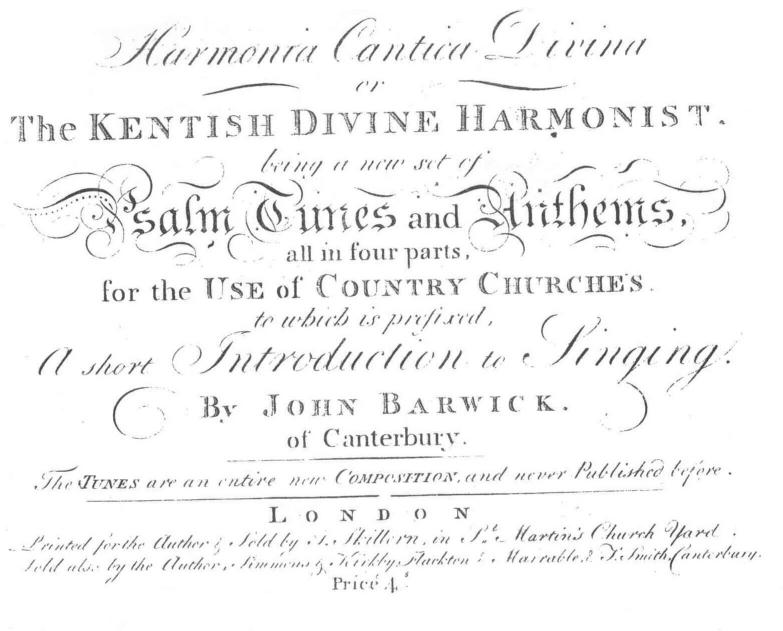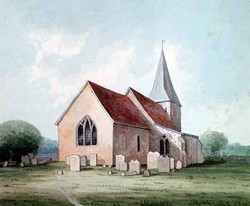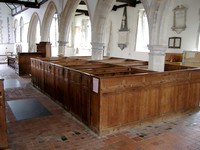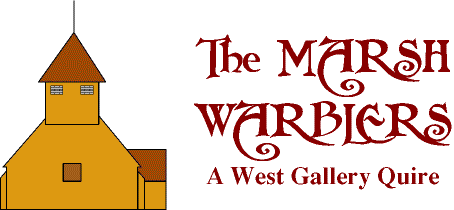
| 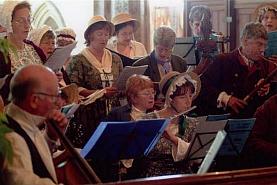
| 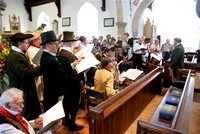
| 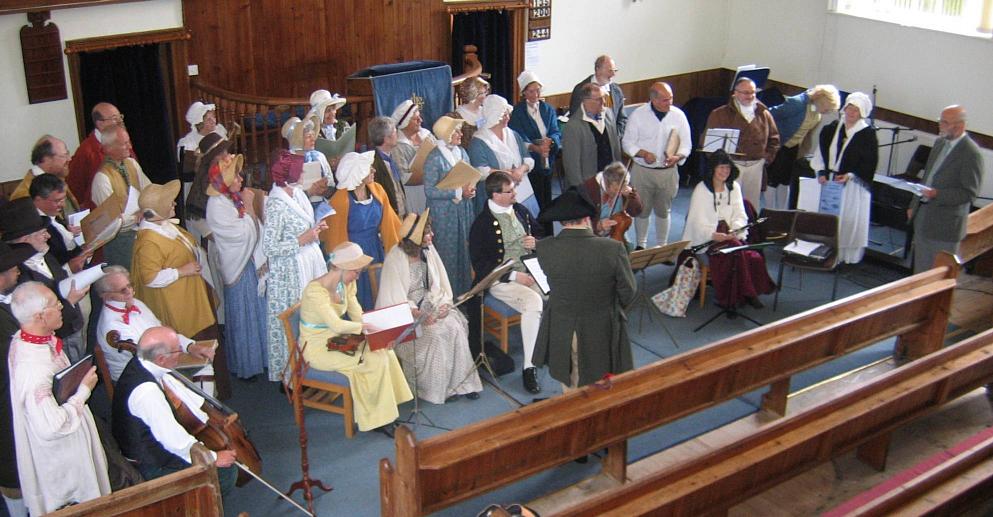
| 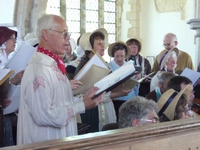
|
Home Page : Contact : Diary of Events : West Gallery Music : Composers : Recordings : Pictures : Research : Links | ||||
|
John Barwick of All Saints, Canterbury, (c.1742-c.1800) John Barwick was probably born of humble parents in Mongeham, near Deal, in East Kent in about 1742. He served an apprenticeship with a Canterbury grocer - these were commonly for seven years from the age of fourteen, and since his father was not a freeman, he was granted the freedom of the city "by redemption" in January 1764. This meant that a fee had to be paid when he completed his apprenticeship. By contrast, two of his sons gained their freedom "by patrimony", ie when their apprenticeship was completed, they qualified as freeman because their father was one and no fee was required. From 1764, therefore, John Barwick was able to carry on a business within the city and must have found premises in All Saints parish soon after. In August 1765, he married (aged 24 according to the licence) Margaret, the daughter of Thomas Cooper, a silkweaver in St.Margaret's parish. His son, John, born in January 1768, went to Cambridge university, and was ordained, serving as curate, and later vicars of several Kent parishes (3). 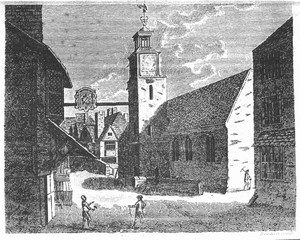 All Saints next the river bridge He clearly took an active part in parish affairs, serving as churchwarden from 1770-2 and as a Guardian of Poor from June 1782 until at least June 1786. He attended most meetings of the vestry, particularly in the later 1760s when the City proposed demolishing and rebuilding the church tower to allow road widening. The City authorities agreed to pay £40 towards rebuilding the tower (and to pay for the faculty) and the parishioners were allowed to keep all the building materials from the old tower. Barwick's signature appears regularly in the Vestry minutes until the 1790s when his son, William, takes his place. The Kent historian, Edward Hasted, in about 1790, wrote:
His preface starts off almost apologetically: "Superfluous as it may seem at first sight, to add to the immeasurable list of Musical Publications, which in some measure, may be said fairly to swarm, a little reflection will both account for it and apologise for it. ... as new generations of people call for new and different modulations of stile in this as well as other musical compositions, the obscure Author of the following work has made it his capital endeavour to adapt that of the present to the distinguishing taste of the age, so far as the nature of religious worship would admit of, or demand." Barwick also felt obliged to include an introduction or gamut, although he made it concise "as long Introductions tend more to perplex the Learner than instruct him". He did however make an interesting practical suggestion about supports for music books. "it is impossible for any person to sing with his chin inclining to his breast; therefore it would be very proper in singing galleries to have some contrivance to raise the books, just when the singers want to use them, and then taken away till wanted again." The volume contains 33 psalm settings and four anthems with the air in the tenor line 'as is usual in parish-church music'. Of the psalm settings, a large number of the tunes (14) contained a fuguing section, an example being Chatham. A further four were of the relay type, such as Selwich, with each vocal part singing a line of text before all parts join to sing the last two lines as a chorus, a style promoted by William Knapp some 40 years before. The remaining psalm settings were mostly strophic although several had sections where lines of text were sung by two parts in duet, eg St.Margaret's (his wife's parish) and Boughton. Presumably Barwick did not expect this collection to sell outside the county since he named all the tunes after places in Kent including Canterbury and five parishes within the city. Moreover, he did not even name tunes after such large towns as Maidstone and Rochester, preferring many small villages, confirming his intention that the music was principally for 'Country Choirs'. As it was his first venture, he may have been insufficiently confident of its success and obtained subscribers in advance to assist with the printing costs. Apart from one subscriber in Battle, a few miles into Sussex, and a Barwick relative in London, the only other subscribers outside the county were William Woodcock, an organist in Oxford and another, William Shrubsole, from Bangor. However, Shrubsole's early years were spent in Canterbury and he probably knew Barwick. The tune names and places of residence of his subscribers give a fairly accurate picture of his sphere of influence, situated througout north and east Kent (see map - tune names are in upper case).
Canterbury booksellers, 'Simmons & Kirkby' took 12 copies but 'Flackton & Marrable' and 'Thomas Smith' subscribed to only 2 books each; Jasper Sprange, a Tunbridge Wells bookseller also took 2 copies. A few gentlemen and clergy supported the publication together with Paul Elden, master of the charity school in Canterbury, and John Horn, master of the free school in Ramsgate. Encouragement also came from Samuel Porter, organist at the Cathedral and former tutor to William Shrubsole. The list of subscribers included several "singing masters" and "teachers of psalmody". One of these, George Jennings of Canterbury, ordered 30 copies!! This was only matched by the 31 copies ordered by numerous Whitstable residents, including six copies by the churchwardens. Clearly Whitstable parish church had a very active choir as did the village of Bridge whose residents subscribed for fifteen copies. Another choir calling themselves "The Select Company of Singers" at Minster on the Isle of Sheppey purchased four books. We know little of Barwick's musical background; it is likely that he was self-taught but he was evidently a competent instrumentalist attending musical gatherings in the city. John Marsh, the classical musician and composer, lived in the Canterbury area for about 5 years and recorded in his detailed 'Journal' most of the musical activities he attended in the city. He often noted in his Journal people who participated in those musical events, and we learn that Barwick was a "grocer and played oboe and flute in the Canterbury orchestra for the winter concert seasons" during the 1780s "and was active in musical productions in the city" (2). It was not for at least another decade that Barwick decided to embark upon a second collection, which was published in April 1796, and the opportunity was taken to re-advertise his original collection. The title was retained, but now read "Harmonia Cantica Divina or the Second Part of Kentish Divine Harmony". This time, being more confident of its commercial success, and possibly suggesting hopes of a wider geographical appeal, subscribers were not sought and the tunes were unnamed, merely the psalm number being specified. Differences in musical style in the second volume reflect changes in parochial psalmody practice in the city and beyond. Most of the settings in the second volume have ornate symphonies, a feature completely absent from the first volume and although there are still many fuguing tunes, the collection contains no relay tunes. Two oboes and a bassoon are specified for the symphonies, possibly suggesting the instruments used in All Saints church at the time (or perhaps just those which John Barwick played or felt were most suitable for church music). Typical examples are Psalm 9 OV and Psalm 11 OV. This volume has no preface or gamut, considered unnecessary as the first volume was still in print. It may be worth noting that the second volume contained no anthems. In 1790, John Barwick owned his own freehold house in Canterbury but its precise location is not known. He last signed the All Saints' Vestry minute book in 1792, when he would have been about 50 years old, after which he disappears from the record. His Last Days Sadly, John Barwick was declared a bankrupt in August 1793 and the notices in the press requested that his creditors should attend the Guildhall in London, presumably because most of his creditors were wholesalers and suppliers in the city. His customers would, presumably, have had to travel to London to settle their bills, too. After this, nothing is heard of him and records relating to his death have yet to be discovered. References: Music files (MP3):
Selwich tune to Psalm 37 OV (a relay tune) Chatham tune to Psalm 1 NV (a fuguing tune) Sturry tune to Psalm 149 OV (a fuguing tune) - taken from our CD "Raise your Triumphant Song" Part 2 (with instrumental symphonies): Psalm 11 OV Psalm 34 NV, |
